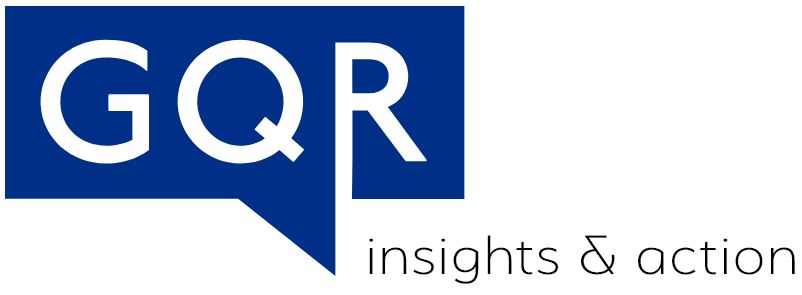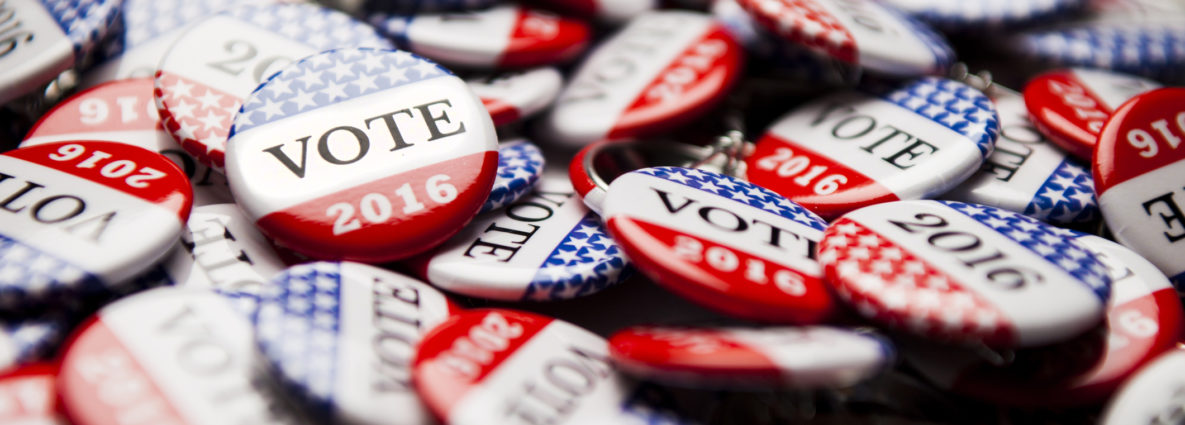Jeremy Rosner, GQR Executive Vice President and Principal, writes about some of the most key factors that drove the result in this historic election.
Tuesday’s US presidential election was a political earthquake – largely unexpected, deeply unsettling, and hugely consequential. Fully understanding its causes and impacts will take months, but this note provides some initial analysis on five big factors that drove the result:
1. Cosmopolitanism lost to “whitelash.” As in many other Western countries, the US is in the midst of an epic struggle between those who have a cosmopolitan outlook (favoring a multi-racial, multi-cultural, multi-religious, globally-connected society), and those who are threatened by the forces helping to create such a society, especially immigration and global trade.
Hillary Clinton’s campaign was premised on a cosmopolitan view (thus her slogan, “Stronger Together”), while Donald Trump’s campaign focused intensely on appealing to the resentments and fears of the latter group – largely white, non-college-educated, and non-urban. That’s why his signature ideas from the start were “building a wall” and “ripping up NAFTA.”
CNN commentator Van Jones labeled this backlash by lower-educated whites “whitelash,” and it fueled Trump’s victory. His support was 5 points higher among non-college voters, relative to Mitt Romney’s vote in 2012. While Barack Obama won 54% of non-college voters in 2008 and 51% in 2012, Hillary Clinton lost this group to Trump by 44-52%. The heart of this dynamic was non-college white men; Trump won an astonishing 72% of them, according to the exit polls. The surge in support from lower-educated men fueled big margins for Trump in many Republican suburban and rural districts – especially in industrial states, where Trump’s margin over Clinton in some counties was double that of Romney’s margin in 2012.
One of the challenges going forward will be to determine how much of the positive response to Trump’s rhetoric was motivated by prejudice against women, minorities, and foreigners; and how much was an expression of economic and cultural anger from working class voters who felt that Washington – including the Democratic Party – was ignoring them. The two impulses are related, and both were at play to some degree, but understanding the mix matters.
But whatever the reasons that Trump’s strategy and rhetoric helped motivate lower-educated whites, Clinton’s cosmopolitan message didn’t do much to motivate her natural voters – those who would most benefit from a more diverse, tolerant, global society. Despite all the evidence of Trump’s disdain and abuse of women, Clinton actually won less of the women’s vote than Obama did in 2012 (54% compared to 55%), and stunningly lost the vote among white women by 10 points (43-53%).
Similarly, her vote among African Americans was down 5 points compared to Obama’s 2012 vote (88%, compared to 93%), and fewer African Americans turned out to the polls. And despite Trump’s insults against Mexicans and American Hispanics, he actually received more of the Hispanic vote than Romney (29%, compared to 27%). More Hispanics likely voted than in 2012, but there was no huge surge in Hispanic voting as some had predicted.
Without a big surge in the “cosmopolitan” vote, Clinton needed at least a decent level of support from white voters – but she didn’t get it. Only 37% of them voted for her – less than the 43% and 39% who voted for African American Obama in 2008 and 2012. In key swing states, like Florida and North Carolina, her support from white voters was even lower – just 33%.
Without question, the US is steadily becoming more cosmopolitan. The share of the electorate that is non-white is growing by 2 percentage points each presidential election (it was up to 30% this year). The diversity and dynamism of America’s population is one of its strongest assets, and is fueling successes from its technology sector, to its entertainment industry, to its “soft power” in global affairs. But cosmopolitanism sets off strong, passionate resentments and counter-reactions, and Democrats found they cannot just ignore these and still hope to win.
2. A continuity strategy was a losing bet in a change election. This year’s electorate was thirsty for change; 62% said the country was going in the wrong direction – amazingly, 10 points higher than in 2012. Trump’s strategy was all about big changes, and he won 69% of those looking for a different direction. More voters wanted “a candidate who brings change” than any other presidential attribute – and Trump won 83% of those who said this.
By contrast, the Clinton campaign often based its message on continuity. It constantly stressed her experience. She repeatedly talked about carrying on the work of the Obama administration. Unhelpfully, in his election-eve remarks in Philadelphia, Obama said his government had replaced his 2008 slogan of “yes we can” with evidence of “yes we did” – as if Americans should feel that the needed changes had been completed.
Clinton could never have run completely as a “change candidate.” She was too much of an established Washington figure to do that. But she could have gone much further to talk about the need for much bigger economic changes – especially the kind of economic changes that many working class Americans feel are still necessary, after decades of stagnant wages and stifled economic mobility.
3. Unsuitability for the presidency was not enough. Clinton and her campaign put tremendous effort into making the case that Trump lacked the temperament to be president. Her speeches, ads, surrogates, and campaign hammered Trump for his offensive actions and comments toward women, racial minorities, Muslims, the disabled, and immigrants; and for being too thin-skinned, impulsive, and uninformed to be a good commander-in-chief.
Despite the ample evidence supporting these attacks, they proved to be relatively ineffective, especially with change-hungry voters who were looking for a positive economic vision. According to the exit polls, even among those who agreed Trump lacked the temperament to be president – and a big 63% majority felt this way – 20% of them said they still voted for Trump. In a year when both candidates had historically high levels of unfavorable ratings, the “pox-on-both-your-houses” voters ultimately still voted for Trump and change. Among the 18% of all voters who viewed both candidates unfavorably, Trump won by 20 points (49-29%). There is a lesson here: attacks on character sometimes work; but they usually have to be related to aspects of character that align with voters’ top concerns.
4. FBI Director Comey’s unethical intervention. On October 28, just 11 days before the election, FBI Director James Comey sent a letter to Congress saying the Bureau had found new emails that “appear to be pertinent” to the investigation the Bureau had earlier conducted, which concluded she had done nothing warranting prosecution. By sending that letter at such a late date – which Department of Justice officials told Comey violated Department policies – the FBI director changed the course of the race – enough to tip its outcome.
The well-regarded “Five-Thirty-Eight” website shows that Clinton’s upward momentum died when the letter was released, and that her margin over Trump likely fell by about 2 points in the following days. Exit polls show that Clinton won the vote of those who cast ballots early on, but lost to Trump 42-47% among those who decided in the final week. In a close race, many factors are sufficient to explain the outcome; but Comey’s intervention stands large among them.
5. The polls weren’t great – but they also weren’t so wrong. Finally, no explanation of the 2016 result can be complete (especially from a pollster) without some focus on why the polls mostly predicted Clinton would win. The polling profession faces many challenges these days, from low response rates, to reaching younger voters who lack landlines, to finding accurate ways to poll online. There should and will be a deep inquiry into how these and other dynamics may have played a role in skewing polling predictions.
Yet if the polling wasn’t great, it also wasn’t so wrong. It is crucial to keep in mind that Hillary Clinton did win – in the popular vote, which is what national polls measure. And her final margin – about 1% over Trump – was only about 2-3 points less than what the average of major national polls predicted.
Some polling did get it wrong – particularly in some key industrial states like Ohio, Michigan, and Wisconsin. Some of this was about turnout. Polls don’t help much in predicting who will show up to vote, and in US presidential elections, that matters a lot. Many of the polls assumed the racial mix of people who actually voted would look like 2012, but as noted earlier, African Americans had lower turnout than in 2012. There may have also been some Trump voters who were reluctant to tell pollsters that they planned to vote for Trump, given his socially offensive profile and his public criticism of much of the public polling.
But it would be wrong to conclude that the polling was mostly wrong. As many more extensive analyses have shown, the average predicted margin among the major polls was accurate across a wide range of key states, including Florida, Pennsylvania, and New Hampshire. Greenberg Quinlan Rosner did the polling for New Hampshire Governor Maggie Hassan in her bid for the Senate – and accurately predicted that she would win, making her one of only two Democrats to beat a Republican incumbent this year. Very close elections – like this one – inevitably lead to more polls that end up on the wrong side. But most of the good polling got things right in 2016.

